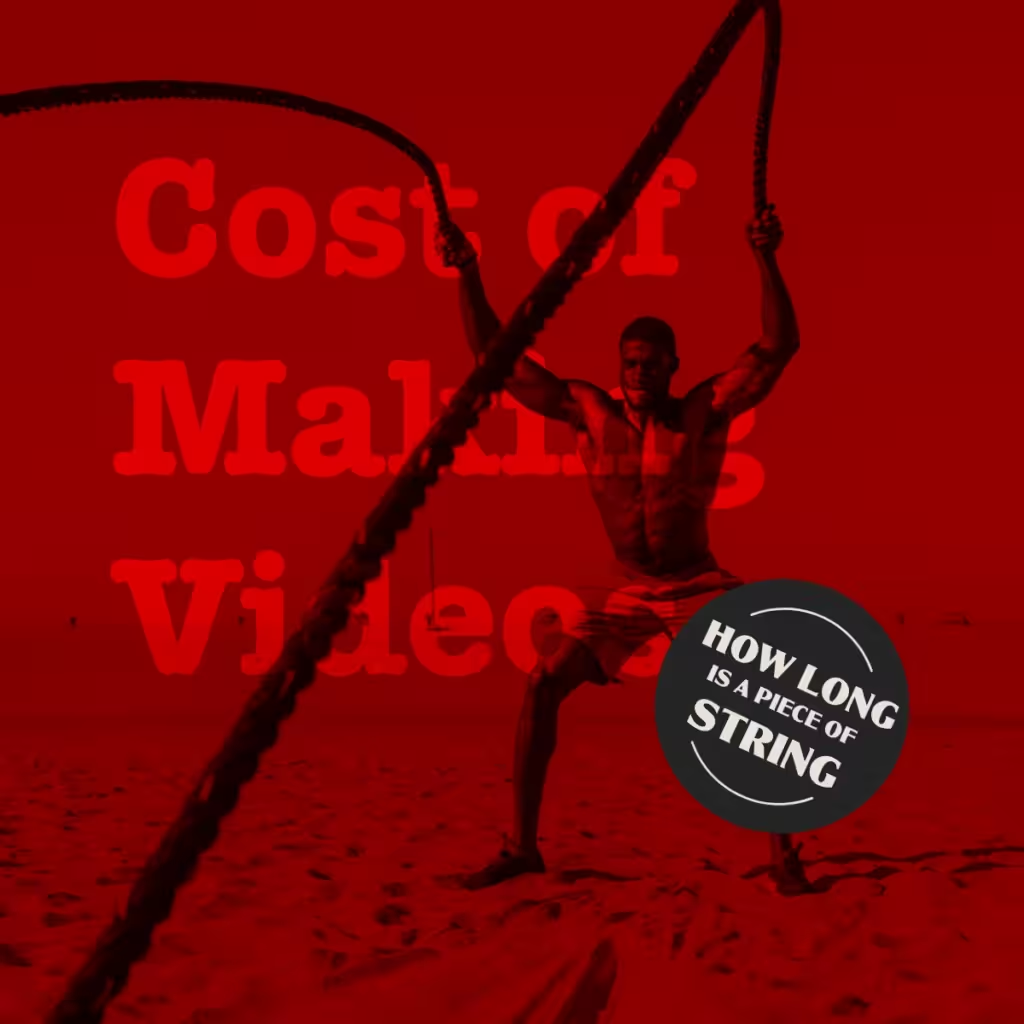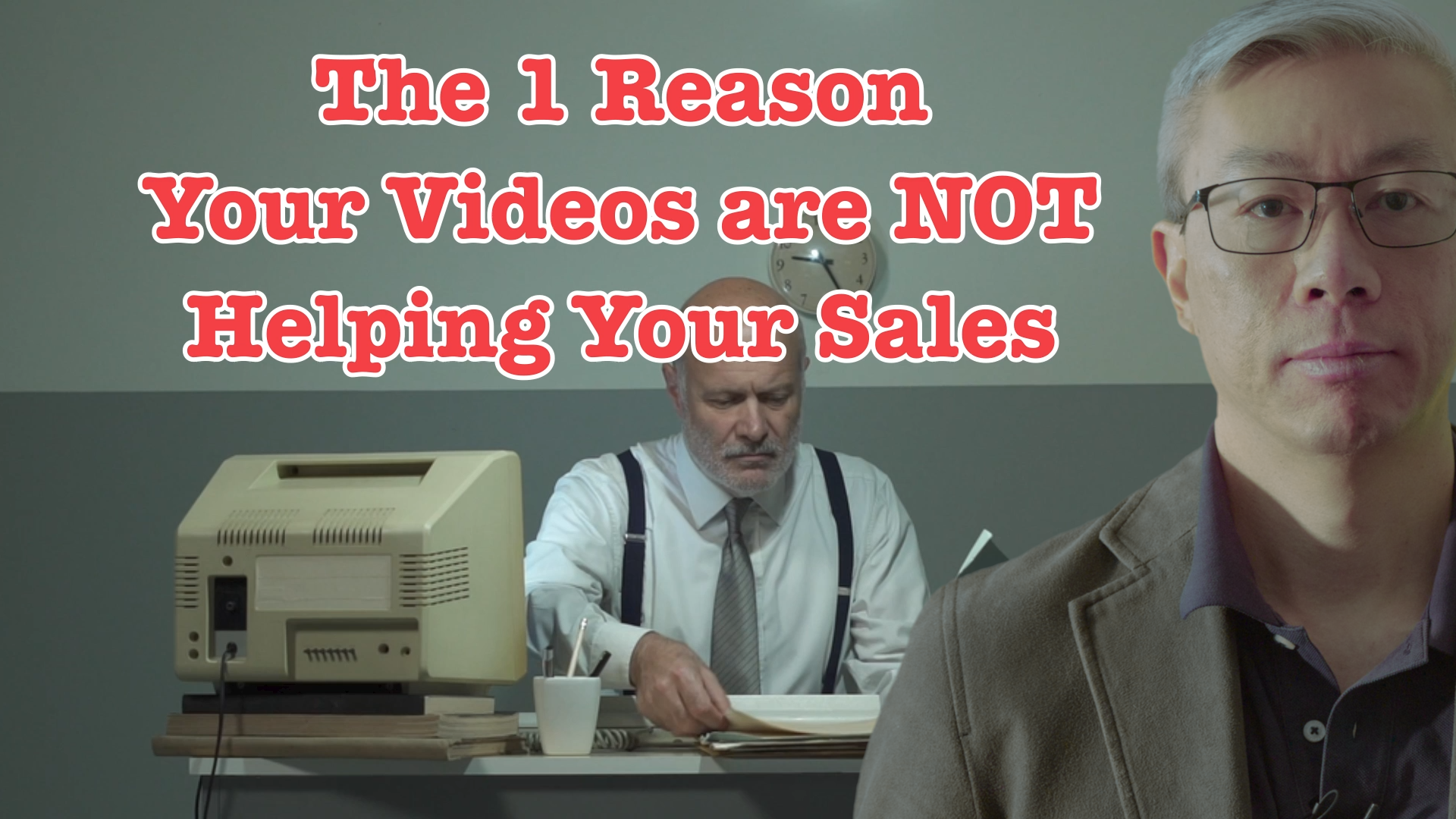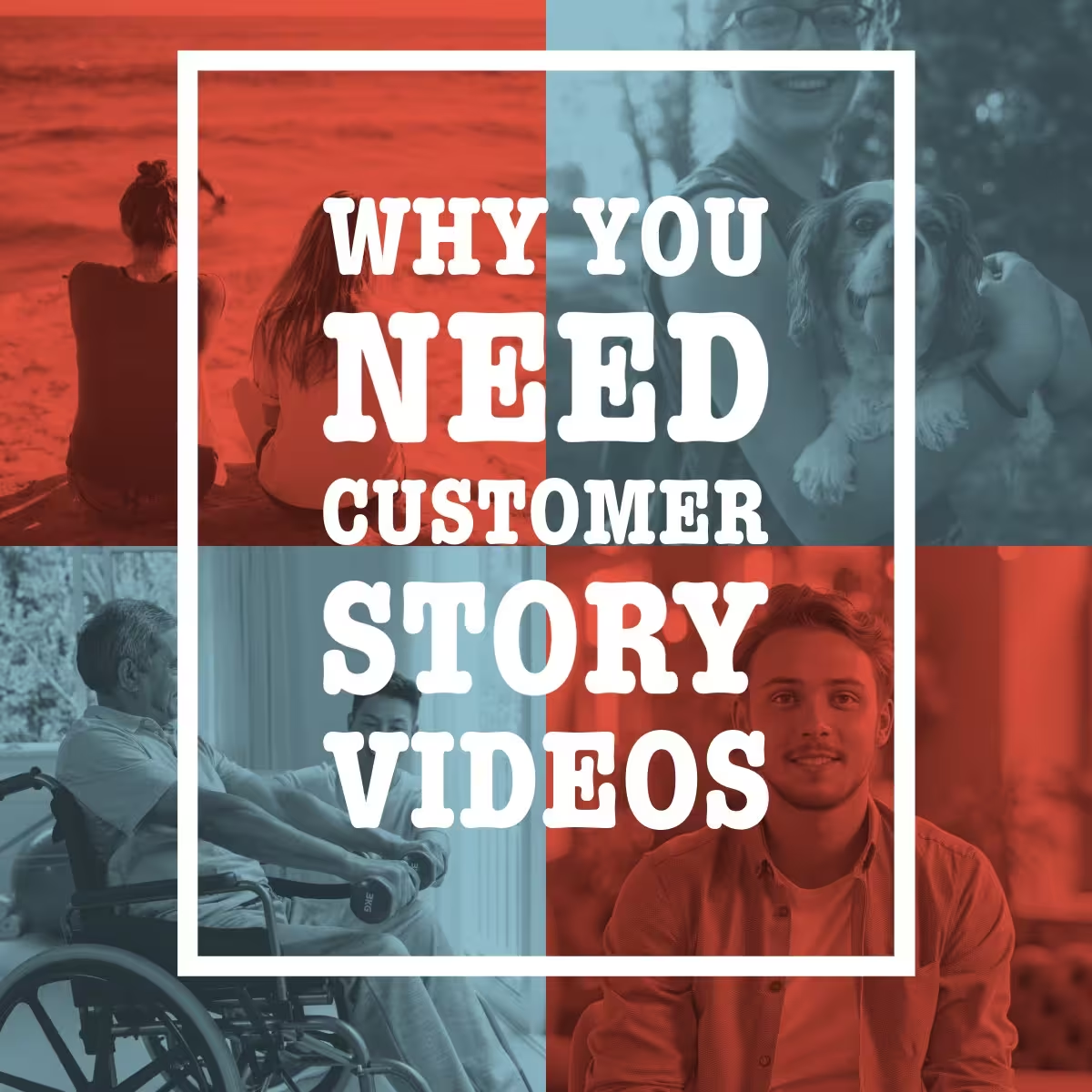How much should a corporate video cost? In answering this question, I’m sure you have heard or have used this phrase or some version of it, “How long is a piece of string?”
Well, let’s talk about that piece of string shall we.
A quick disclaimer: Any fee I disclose in this post is based on the average cost of video production in Melbourne, Victoria, Australia, and the costs can vary from State to State, and Country to Country; however, it will give you a good idea of what goes into a video production.
The first thing to address is if you wanted an Animated video, that is with no, or minimal filming of people on a location; OR if you want a video that involves filming with no, or minimal animations.
Oh, here’s a segue: To be clear, Animated videos are not just “cartoons”, it includes videos where you have artwork made on a computer, or drawn on paper/whiteboard/etc, that moves and appears to help support the information. It also includes the use of stock footage, that is live action footage that you buy from GettyImages, or other footage sites, and soon AI generated videos as well.
These footage usually uses text or graphics or artwork to enhance or support the information.
Okay, back to the question of “How much does it cost?”
In any video production, we break down the process into, more or less, 3 parts:
- Pre-Production:
This is where we work with you to work out the Content and Design of the video.
This includes writing the script, designing styles for the graphics or artwork, and getting locations and video crews for shoots. We will help prepare the actors, interviewees, or speakers, for the shoot so that everyone knows what to expect for the shoot. - Production:
Here is where Animators get to animate; or we get on location to film whatever the script requires. We record and produce the the voice-overs at this stage. - Post-Production:
This is where everything comes together. Animations will have sound and music added to give them more zing. The editing and polishing of Live-Action videos will take place at this stage.
So, looking at this process, you’ll see the cost centers involved in any video production and what makes up the “hardware” cost of video production:
Pre-Production Costs
Scriptwriters – Typically costs between $800 – $3000.
Depending on the number of scripts needed, and the length. Script writers charge by either word count or expected video duration; both are not mutually exclusive.
Designers – Typically costs between $800 – $10000.
You may require a designer if the animation needs storyboards, where the designer works out and designs all the scenes. Sometimes you only need style frames; that is, the designer only creates some frames that can be repeated throughout the video.
Again, the number of frames or expected duration of a video is the key to how much the designer will charge.
Production Costs
Talents – Costs per talent can go from $0 – $50000 or more.
It is “free” if you are using your own staff, or yourself as the talent. If you hire a paid actor, they will charge based on whether they are speaking or not, the expected time on set, their “star power” (obviously if you hire a known actor or a seasoned performer, they will cost more), and the one key factor that many businesses may not be aware of, Usage fee.
The Usage fee is where an actor can negotiates how long you are allowed to use their image and where you can use it. Typically, it use to be ‘in perpetuity’ which means that the actor signs over their image to you to use as long as you need, but that is increasingly no longer the case.
The usual practice is between 6 months to 3 years, where the longer the duration, the more the fee. Think of it as a subscription to use the image of the actor.
The other component in usage fee is where the video will be used.
You usually don’t pay much if the video is only used on YouTube, some social channels and within your website.
HOWEVER, if it is used for paid advertising, on television, radio, or even on YouTube Ads, actors can ask for a premium as there are implications to their careers.
For example, an actor who appears in an advertisement with a car, even if it is not a car ad, may not be able to appear in another advertisement with a car or a competing brand. OR, famously, for Australians familiar with the AAMI lady, will know that she had a media buy out, meaning that AAMI paid her to not appear in any other advertisement because she was the face of AAMI.
Oh, this applies to Voice over Talents as well. Voice over talents are people who provide the narration to videos, regardless of whether it is for an animation or to support a Live-action video. Think of Sir David Attenborough in nature documentaries.
Locations – Cost can vary from $0 – $10000 or more.
If the location belongs to you/your business, then it is free. However, just like talents, locations can have various costs. Even public spaces may require permits, which the local council may or may not charge a fee for.
Just like talents, certain locations will charge a premium if you use the video as paid advertising.
Professional Film Crew – The cost for a film crew ranges from $1100 – $15000 per day.
For the most basic filming on one location, where you have a Camera Operator who doubles up as an audio recordist, the cost is typically around $1200 – $1500 depending on the equipment required.
However, if the filming style and location requires a larger crew or specialised equipment, then the cost of the extra specialist and gear will add up.
For example, a typical 2 person crew will usually cost around $2500, which usually includes a Camera Operator, and a Sound Recordist who may or may not double up as the Camera Assistant as well.
Director and Producer on Set – While I hate to say it, this person is optional.
In many simple on-location filming situations nowadays, the Camera Operator often acts as a director in their own right. The producer usually remains off-set because much of the behind-the-scenes work, such as scheduling, catering, and talent wrangling, is pre-planned sufficiently to eliminate the need for the producer’s presence.
However, a producer should be on-set if there are variables on a shoot, such as filming in a public space or expecting multiple talents to arrive at different times or locations that need management.
Typically, a Director and a Producer on set will cost around $750 – $2500 per person per day, depending on the seniority of the director and producer required.
Animators – Depending on the style of animation, an animator will cost between $750 – $2500 per person per day.
However, video agencies usually calculate this cost based on project requirements, and they may hire an animator or animation team at a project rate rather than an individual rate.
It is usually safe to say that it will cost around $1200 a day for most animated videos or around $1200/min of animation, again, both are not mutually exclusive.
3D animation will have a different cost, and that is a whole different calculation altogether that I will not get into here.
Post-Production Cost
Editor – Typically an editor costs between $500 – $1200 per editor per day.
Again, just like animators, we usually negotiate a project fee and hire an editor or editing team for a project based on the requirements of the video.
Music Licences – For most videos, having a sound track adds an extra layer of emotional appeal to the video. It sets the mood, and tone for the stories, even if it is for a video where a presenter is talking directly to the audience on screen.
Again, just like talents, there are a few conditions that come into play with music licensing fees:
a. Usage:
Just like with actors, using a music track for broadcasting on television, radio, or in a cinema usually costs more compared to using a video that will only be used in a “limited” way online; for example, on your business website, social media channel, or YouTube.
However, there are now more music licensing services that do not distinguish between broadcast and non-broadcast usage, so it is important to read the fine print when using any music for videos.
b. Duration of music used:
Certain music tracks, although it is now increasingly rare, charge per second of use. So if you only use 1 to 5 seconds, it will cost less then if you use the whole song.
c. Royalty Free or not: Typically, most video agencies will provide royalty free music, which means that the single fee will cover the video in perpetuity, regardless of length used. However, you may choose to want to use a popular song from, say Taylor Swift.
These songs are licensed from the artist and music label on a case by case basis, and the fee, and terms of use are dictated by them. For example, Taylor Swift may want you to pay a 6 monthly license for her song or limit the use to only on your website.
d. Original compositions: You can also choose to compose original music for your video. Typically, that can cost between $500 to $5000 or more. Again, much of it will come down to how long a composition you need, and where it will be used. However, you can dictate the terms to the composer on originally composed music.
Having said that, typically, the Royalty Free music licence for a corporate video used online, ie on a website, and placed on social channels only, usually cost anything between $50 – $200.
Audio Editing – This usually costs around $500 – $1500. While not as critical for live action videos, Audio Editing, or as we usually call it Audio Sweetening, or Sound Mixing, is a very important part of any video.
This step of post production is to ensure that all the voices can be heard clearly, the music and sound effects does not overwhelm the voices, but compliment the information and content, and add the extra oomph to any video, especially animations.
Sorry another segway… Even in Nature documentaries as prestigious as Planet Earth, much of the sound is added back as sound effects. That is because it is very difficult to capture live audio while the camera is probably 100m or more from the subject, and any audio captured is usually un-usable. So the Lion roar, or Monkey Howl is probably not the actual roar or howl from the animal you see.
So at this point, you are probably thinking that this piece of string is starting to get quite long. Especially since we are only talking about the “hardware” costs. What about the software cost like: Project management, Creative Conceptualisation, Client management cost?
Project Management and Creative Direction Costs
Generally, Video agencies will charge this as a percentage of the total “hardware” cost of the project, which can range from 10% to 30% and some as high as 50%. This means that if the “hardware” cost of producing a specific video is $5000, then we will tag an extra $1500 (30%) to cover other costs, bringing the total cost to $6500.
However, this is not a standard practice. Some agencies calculate the cost of hiring a producer to manage the project and the cost of employing a creative director for the video’s creative direction. They then add a fixed “capital cost” fee that essentially covers the expenses necessary for running the business, such as insurance, to ensure that you are covered during the shoot.
If you’re wondering why we charge a small fee for our business costs, it’s likely that your business is doing the same, just in a different way. For example, a cafe would have worked that fee into every coffee and sandwich sold; or a machinery manufacturer, would have already added the cost of electricity, any software licences etc, into each unit or thousand units of the product.
In the video production business, our product is our excellent and creative service provided to you to help you create the right video to achieve your marketing, training, or sales goals. To do that we need to pay software licenses for project management, editing tools etc.
Conclusion
So now you know what goes into that quote that a video agency sends to you, or if you want to ballpark of what your video might cost, or open a discussion with your video agency on pricing, then this is a good place to start.
However, do note that what you are really paying for when you hire a good video agency to make your videos, is not the hardware, but really the experience, creativity, and expertise to produce the best video to meet the goals you want achieve with this video.
Making a video isn’t about having the one tool that you only use once, but it will, if done well, continue to work for your business in the background to help your sales and marketing. So, to properly calculate the Cost and ROI of a video, you should keep this idea in mind.:
This video is like a silent marketing agent for your business or product or service. It works even when your sales team or marketing team isn’t working, and it will keep working for 5 to 10 years after someone has made it.
And this can happen only if you make it well and intentionally so, in the first place.
If you want to know our pricing packages for video testimonials, you can go to this page. If you want to book a time to find out more about how we can help you make fantastic videos, book a time over here.




